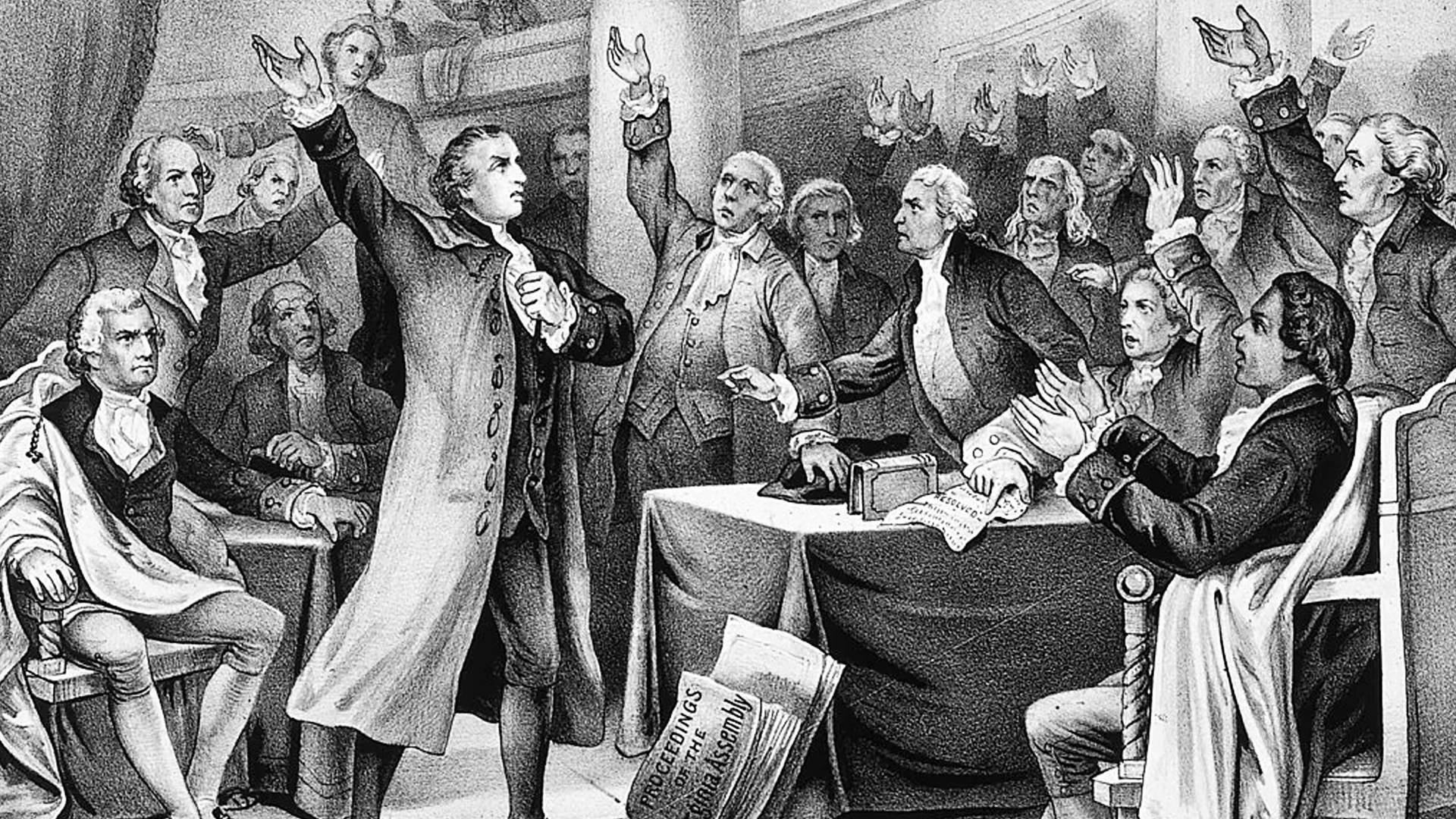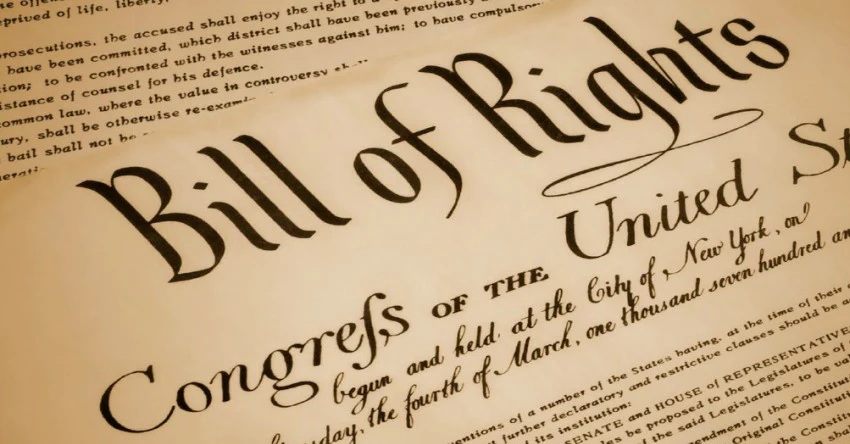Congress Approves the Bill of Rights

The Bill of Rights—our nation’s first ten amendments—spells out the freedoms most Americans consider essential today, like free speech, freedom of religion, and the right to a fair trial.
What Happened?
When the Constitution was first written, it didn’t include a bill of rights. That shocked people like George Mason, who refused to sign the document without protections for individual freedoms. James Madison, who originally thought a bill of rights was unnecessary, soon realized that the new government wouldn’t survive politically unless citizens were promised specific protections.
On June 8, 1789, Madison introduced a series of amendments in Congress. He hoped they would calm critics and strengthen support for the Constitution. After months of debate, Congress settled on 12 amendments and approved them on September 25, 1789. These amendments were then sent to the states for ratification.
The First Amendment protects five core freedoms—speech, press, religion, assembly, and petition. This means you can speak your mind, write or publish ideas, practice your faith (or not), gather peacefully, and ask the government to fix problems. Without these protections, democracy couldn’t function—people would be too afraid to challenge those in power.
The Second Amendment gave citizens the right to bear arms. At the time, this was connected to local militias and self-defense in a young country without a standing army. Today, it remains one of the most debated amendments, raising questions about safety, responsibility, and freedom.
The Third Amendment says the government cannot force people to house soldiers in their homes. This may sound strange now, but it came directly from colonists’ anger at British troops being quartered in private houses during the Revolution. It’s a reminder that even private homes are protected from government intrusion.
The Fourth Amendment protects against unreasonable searches and seizures. In practice, this means police need a warrant or good reason before searching your property. This amendment defends personal privacy and keeps government power in check.
The Fifth through Eighth Amendments focus on fair treatment in the justice system. The Fifth guarantees due process, protection against double jeopardy (being tried twice for the same crime), and the right not to incriminate yourself. The Sixth ensures speedy and public trials, impartial juries, and the right to an attorney. The Seventh protects the right to trial by jury in civil cases, while the Eighth bans cruel and unusual punishment. Together, they make sure that justice doesn’t become abuse of power.
The Ninth Amendment is often called the “people’s safety net.” It says that just because a right isn’t listed in the Constitution doesn’t mean people don’t have it. For example, rights to privacy or personal choices are protected even if not written word-for-word in the document.
The Tenth Amendment reserves powers not given to the federal government for the states or the people. This helped reassure citizens that the new central government wouldn’t become all-powerful—it had limits, and local communities still had authority.
For everyday Americans, the Bill of Rights meant real protections: you could worship freely, publish your ideas, gather with others, and speak against the government without fear of punishment. Over time, the Bill of Rights became the cornerstone of American democracy, influencing landmark Supreme Court cases and shaping the balance of power between citizens and government. Looking back, it’s clear that September 25, 1789, wasn’t just about paperwork in Congress—it was about giving Americans a voice, a shield, and a promise of liberty that still matters today.
Why It Matters
The Bill of Rights gave Americans confidence in their new government by guaranteeing freedoms and protections many feared would be lost under federal power. It created a balance of power between the government and its people. Without it, the Constitution might never have been accepted, and American democracy could have started on much shakier ground. By guaranteeing core freedoms and protections, the Bill of Rights gave Americans confidence in their new government and laid the groundwork for civil liberties that people still defend, debate, and expand upon today. Over time, these amendments have been tested in courts, applied to new situations, and extended to protect more Americans, continuing to serve as both a shield for liberty and a tool for justice.
?
Why do you think the Founders originally left a bill of rights out of the Constitution?
Which amendment in the Bill of Rights do you think affects your life the most today?
Why was ratification of the Bill of Rights necessary to secure public trust in the Constitution?
How does the Bill of Rights continue to shape Supreme Court cases and debates today?
Do you think more rights should be added to the Constitution in the future? Why or why not?
Dig Deeper
A quick overview of the rights guaranteed by the first ten amendments.
A look at why the Bill of Rights was left out of the original Constitution and how it was added later.
Crash Course explains the difference between civil rights and liberties, and how the Bill of Rights has evolved.
Related

The First Amendment: America’s Blueprint for Freedom
The First Amendment protects freedoms of speech, religion, press, assembly, and petition. It’s the foundation of American democracy—but also a source of constant debate and interpretation.

The Bill of Rights: What Is It—and What Does It Actually Do?
The Bill of Rights wasn’t added to the Constitution because everything was going great, it was added because the people didn’t trust the government. And they had every reason not to.

Federalists vs. Anti-Federalists: The Battle That Built the Constitution
One side feared chaos. The other feared tyranny. Together, they gave us the Constitution—and the Bill of Rights.
Further Reading
Stay curious!
